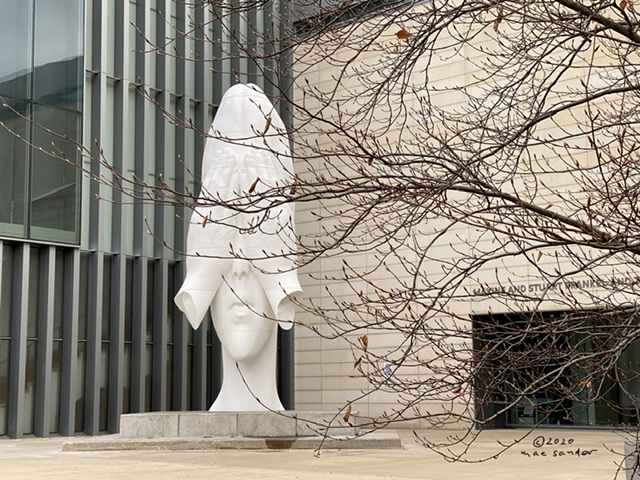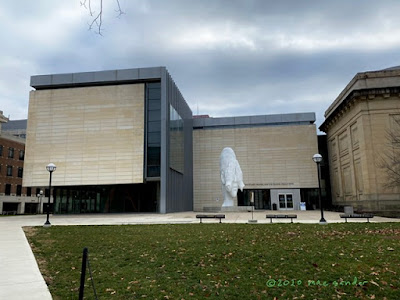 |
Caste: The Origins of Our Discontents
by Isabel Wilkerson, published August, 2020. |
Voters in the 2016 election seemed to vote against their interests. "They were willing to lose health insurance now, risk White House instability and government shutdowns, external threats from faraway lands, in order to preserve what their actions say they value most— the benefits they had grown accustomed to as members of the historically ruling caste in America." (p. 324).
The role of caste in driving American behavior is the central idea of Isabel Wilkerson's book Caste. She shows that the American relationship of White and Black people, from the start when African slaves were first introduced, produced and maintained a caste system like that of India. The possession of higher-caste status by all White people meant everything to the less educated, less successful, and less wealthy Whites whose superiority was based only on the caste system itself, and on nothing inherent in themselves.
Painstakingly, Isabel Wilkerson details the formation of the American caste system, and delineates why it's a much more powerful way to look at our society than using the concept of racism. She illustrates the "pillars" of the caste system, including that it's supported by religious beliefs, it's enforced through anti-intermarriage laws and customs, that one's caste is strongly inherited and inescapable, that it's enforced by terror and cruelty as well as psychological means, and that being a member of the upper caste confers automatic superiority. She provides vivid examples from her own experiences and those of others to show the cruelty and inhumanity of the system and the stress it creates in the members of the lower caste, that is, in Black people.
Hitler modeled his anti-Jewish laws on the laws and customs of the American caste system, Wilkerson points out. Parallels between the persecution of Jews by the Nazi authorities in the 1930s and the persecution of Black lower-caste Americans are painful to read. Wilkerson writes: "Hitler especially marveled at the American 'knack for maintaining an air of robust innocence in the wake of mass death.'" (p. 81).
Actually, everything in this book is painful to read and I had to force myself to get through it. Admittedly, I wasn't able to finish reading her equally painful earlier book, The Warmth of Other Suns, published 2010, which documented the American caste system in another way. I'm not going to try to summarize the many other interesting topics in Caste, which the author used to make her persuasive argument in favor of this viewpoint. If you think what I've said is weak, you should read the book before you try to refute the point on the basis of what I've said. My summary is very incomplete.
Caste is a very powerful book, and the conclusions about our society highlight a wide variety of American's behavior. The election of 2020 was no different than the election of 2016 when it comes to White voters, about which Wilkerson wrote:
"Why, some people on the left kept asking, why, oh, why, were these people voting against their own interests? The questioners on the left were unseeing and yet so certain. What they had not considered was that the people voting this way were, in fact, voting their interests. Maintaining the caste system as it had always been was in their interest. And some were willing to accept short-term discomfort, forgo health insurance, risk contamination of the water and air, and even die to protect their long-term interest in the hierarchy as they had known it." (p. 327).
Just remember this:
"Through no fault of any individual born to it, a caste system centers the dominant caste as the sun around which all other castes revolve and defines it as the default-setting standard of normalcy, of intellect, of beauty, against which all others are measured, ranked in descending order by their physiological proximity to the dominant caste." (p. 268).
Critics were enthusiastic about this book:
- In the New York Times, reviewer Dwight Garner called Caste "an extraordinary document, one that strikes me as an instant American classic and almost certainly the keynote nonfiction book of the American century thus far."
- In the Washington Post, Kenneth W. Mack, a historian and a professor of law at Harvard, says Caste is "a powerful, illuminating and heartfelt account of how hierarchy reproduces itself, as well as a call to action for the difficult work of undoing it."
- On the NPR website, reviewer Hope Wabuke referred to Caste: "a masterwork of writing — a profound achievement of scholarship and research that stands also as a triumph of both visceral storytelling and cogent analysis."
Each reviewer that I read cited different details in describing the book, which reflects Wilkerson's wide-ranging collection of fascinating history and examples. Reading the reviews after I wrote my own impressions made me feel that my enthusiasm was shared by many more expert readers than myself. I do recommend it!
Review © 2020 mae sander.





























































